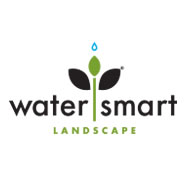Incentive Program Requirements Print
- M=Mandatory
- S=Suggested
Based on the criteria below, the San Diego County Water Authority and its Sustainable Landscape Program (SLP) partners are providing an incentive of up to $1.75 per square foot for qualified residential sites (up to four dwelling units served by a single water meter) that replace existing, water-intensive turf grass with alternative, water-efficient landscaping and incorporate storm water management practices. Download these requirements as a PDF
-
Site/Project Qualifications
- Existing turf in the proposed project area must be between 500 and 3,000 square feet; (brown or dead turf is acceptable). (M)
- The project area must have an existing in-ground, operational irrigation system. (M)
- The property must be located in San Diego County Water Authority’s service area. (M)
- Refer to the SLP Terms and Conditions for additional requirements.
-
Pre-Conversion Site Inspection of all participating sites includes: (M)
- Existing turf verification
- Existing operating, in-ground irrigation system verification
- Project area measurement
- Roof area measurement and detention area(s) confirmation
- Site photos
-
Post-Conversion Site Inspection of randomly selected sites includes:
- Plants (type, quantity, and plant coverage) installed per plant coverage worksheet
- Irrigation system upgrades (if required)
- Water pressure and valve verification
- Soil amendment including compost and mulch compliance
- Rainwater capture
- Site Photos
-
Rainwater Capture
Goal: Capture the first flush of rain onsite (1” within the first 24 hours)-
A worksheet is required that calculates:
- Amount of rainwater captured from onsite impermeable surface(s) such as roofs, driveways, walkways, etc. Minimum capture area must be at least 400 square feet. (M)
- Volume of detention area(s) capturing/storing rainwater (e.g., swale and rain barrels). (M)
- Self-certification that infiltration areas are at least 5 feet from any building foundation and property line(s), 3 feet from an impermeable surface, and no more than 12 inches below finish grade. (M)
-
Sites with rain gutters:
-
Project area must direct rainwater into the landscape (i.e., downspouts or rain chains into swales or berms). (M)
- Rain barrels or cisterns may be considered in lieu of a downspout redirect if the landscape is not adjacent to the rooftop footprint and/or the project site is less than 1,000 square feet
- The overflow from rain barrels or cisterns must flow to a permeable landscape area. (M)
- The rain gutter, downspout or rain chain shall not be made of copper due to potential leaching. (M)
-
Project area must direct rainwater into the landscape (i.e., downspouts or rain chains into swales or berms). (M)
-
Sites without rain gutters:
-
Surfaces beneath the roof eaves are EITHER:
- Vegetated with hearty plants, such as natives, that can withstand the physical impact of rain (rain garden); OR
- Covered with mulch, gravel or other sturdy and permeable materials, AND
- Hardscape surfaces beneath roof eaves that are altered to create areas of permeability (S) and direct surface flow of rainwater into vegetated or mulched areas or retention/detention devices (M)
-
Surfaces beneath the roof eaves are EITHER:
-
A worksheet is required that calculates:
-
Soil Preparation
Goal: Build healthy living soil that helps reduce runoff and create a healthy environment for plants
- Grass removal via sheet mulching with paper or cardboard (S)
- Organic soil amendment or compost (M)
-
Minimum 1.3 inches of compost (M)
- Organic soil amendment or compost required in 100% all permeable areas (M)
- Minimum 3-inch depth of organic mulch (M)
- Mulch may be feathered down adjacent to paved areas. (S)
- Mulch is not required in areas with rooting ground cover. (S)
- Project area may include up to 10 square feet of bare soil as habitat for ground bees and other species.
-
Plants
Goal: Select Climate-appropriate plants-
Plant coverage worksheet (M)
- The new landscape must have 50% minimum plant cover at maturity. (M)
- New plants may be classified as moderate, low or very-low-water use plants per the WUCOLS IV: Water Use Classification of Landscape Species (http://ucanr.edu/sites/WUCOLS/) (to be self-certified for verification with random post-inspection); no more than 40% of the site may be comprised of moderate-water use plants (M)
- Invasive plants are not eligible – refer to the California Invasive Plant Councils website for a list of invasive plants http://www.cal-ipc.org/paf/ (M)
- Turf-looking grasses (natural or synthetic) are not eligible (M)
- The Program encourages the use of alternative, walkable groundcovers, such as Dymondia margaretae. However, turf-looking warm-season grasses (e.g. Paspalum, Buffalo Grass) are not allowed.
- As a best practice, the Program urges participants to produce planting plans and to submit these as part of their application documents. (S)
- Program participants are encouraged to retain any plant tags, labels and pots with plant information until project is complete or post-conversion site inspection has been conducted (for selected properties). (S)
- Plants should be grouped together by similar water needs (hydrozones) (M)
- New and existing trees (including fruit trees) are encouraged and up to two trees can be counted towards the plant coverage requirement at the rate of 50 square feet per tree (100 square feet maximum), and may also be counted as an eligible cost. Additional trees are allowed, however they will not count towards the minimum 50% plant coverage requirement.
- Use caution when digging up your landscape areas around mature trees. The roots typically extend at least to the edge of the drip zone, which is the area that the tree’s canopy covers.
- New trees in the project area must be classified as moderate, low or very-low-water use trees.
-
Plant coverage worksheet (M)
-
Irrigation
Goal: Convert existing traditional spray heads to more water-efficient methods using one of the following methods:-
Drip/Micro Irrigation or hand-watering (S)
- Pressure regulator is required for all irrigation systems (except for hand-watering);
- Appropriate pressure should match the irrigation type (participant self-certifies and/or verified during random post-conversion site inspections). (M)
- Filtration is required on all drip/micro irrigation systems (participant self-verifies or verified during post-conversion site inspections for selected properties). (M)
- Low application nozzles should not emit more than approximately 1” per hour. (M) Please refer to Low Application Nozzle list. (High Efficiency Nozzle-Rotors List)
- If more than one type of irrigation is used, do not mix different sprinkler types in one zone (M)
- Hydrozoning - Plants should be grouped together by similar watering needs; each hydrozone shall be irrigated by separate irrigation valves. (M)
- Watering radius must match the dimensions of project area. (M)
- No overspray onto buildings and hardscapes. (M)
- No run-off to street (M)
- A “smart” irrigation controller or rain shut-off feature if a controller is used (S)
- As a best practice, the Program urges participants to create irrigation plans and submit these as part of the application documents. (S)
-
Drip/Micro Irrigation or hand-watering (S)
-
Hardscape
Goal: Use permeable hardscapes to allowed rainwater to penetrate slowly into the ground, where pollutants are filtered and ground water is recharged- All surfaces must be permeable and covered with mulch, rock cobble, un-mortared pavers, flagstone or un-compacted decomposed granite (DG) (without stabilizers). Rock cobble, un-mortared pavers, flagstone and DG shall not exceed 25% of project site. (M)
- Any new impermeable areas will be subtracted from incentive amount (M)
-
Education/Training
Goal: Participant understands the concepts of soil sponge, rainwater retention, appropriate irrigation scheduling, plant selection and storm water pollution, etc. and has:- Attended and completed one of the SLP approved Education & Training classes OR
- Read the San Diego Sustainable Landscapes Program Guidelines and completed the on-line quiz (available on your dashboard once the on-line application has been completed)
- Participant needs to achieve an 80% passing rate to be eligible for the program. (M)
-
Ineligible Sites and Project Costs
- Synthetic/artificial turf (or other turf-looking grasses) and invasive species-type plants
- Sites using recycled or well water for irrigation
- Sites that are hand-watered (with no in-ground irrigation system).
- Additional eligible and ineligible program costs are listed in the SLP Terms and Conditions.
-
Other
- Only one incentive per site address will be issued for this program. (M)
- Project must comply with all applicable laws, codes, policies, covenants, conditions and restrictions applicable to the site. (M)
- Complete project within 120 days of approval; extension allowed if proper notification given and at the discretion of the SLP program administrator. (M)
- Customer must agree that water use records can be evaluated for the next 15 years. (M)
- The program allows all portions of the property (front, back, side yards) where there is existing turf to be converted (500-3,000 square feet). Previous turf incentive program participation square footage will be calculated towards the maximum square footage.
- New water features such as ornamental, recreational and cascading fountains are allowed within project area; however will not be calculated as an eligible cost towards the incentive. (M)
-
Upon project completion, Participant must submit a minimum of five (5) color photos per converted area (i.e., front, side, and back yards). (M)
- Additional photos may be requested.
- Upon project completion, Participant must submit project-related paid receipts/invoices. Incentive amount is based on actual, verified conversion square footage or amount of eligible (materials costs only) project-related receipts/invoices (whichever is lower). (M)
- Since the program is grant-funded, all material costs reimbursed by this project are subject to an audit. Photos shall thoroughly document project has met all program requirements to receive an incentive (i.e., types and quantities of plants, depth of organic compost and mulch used, irrigation system upgrades (if applicable), new rain barrel(s) or cistern(s), “smart” irrigation controller (if applicable), permeability between pavers or flagstone, etc.)
- Participants will be issued 1099-Misc forms if the incentive amount is $600 or more. Participant’s Social Security or Tax Payer ID number must be provided upon request for tax purposes.
- Contact Information:
- Website: Sustainable Landscapes Program
- E-mail: SDCWA@waterwise-consulting.com
- Telephone: 1-866-648-2925

